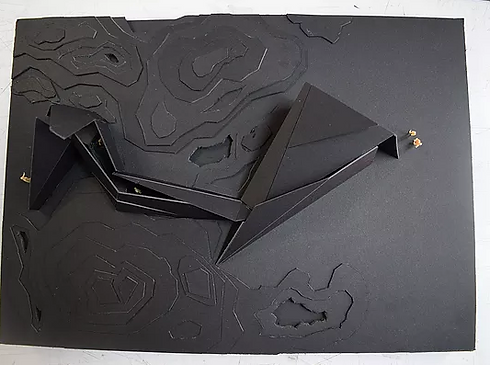PROJECT o1 >> JOURNEY OF THE 5 SENSES
In a group of 5 ,we are to design an experential walkways of linear and concentric typologies based on literature given. Each tutor had given us a selection of literature in terms of a poem, a song and a short story. Then, we were to choose two of these literary pieces and translate them into architecture. We chose the song Free as a bird, and the short story Shadow Man.
Before we begin designing the walkways, we first have to conduct precedence studies on existing buildings of linear and concentric typologies. We chose to study the Air Force Academy Chapel and Borobudur.
Spatial organisation is a key consideration for architects in architectural design. The study and exploration of different spatial organization methods is important in design because it informs human occupation, behavior, and experience within architectural spaces. Writers such as Francis D.K. Ching labeled this as architectural ‘order’ whilst Alexander Purves called this ‘the formal patterns’.
Project 1 is an introductory project by which you are required to explore issues of spatial typologies and poetics through simple design exercises. Working in groups of 4-5 students, you are to propose 2 schemes for a Walkway Space themed ‘journey for the 5 senses’. You are required to design the space in the form of semi-open architecture by using two contrasting spatial types of your choice. There is no specific site for this design work. The story of your design should translate the literatures given by your tutor, and it should be informed by precedents studies.
// Final Board (Precedent Studies)


// Final Board (Walkway)




// Final Model




PROJECT o2 >> GENIUS LOCI (SITE ANALYSIS + CONCEPT DEVELOPMENT)
Society, culture, history, memory and the landscape of a particular place echoes the meaning of that ‘place’, or its ‘genius loci’. These qualities will inform the architectural concept and generators for Project 2. In Project 2, the design brief calls for an architectural response toward the sense of place with a strong engagement and relationship to the site and programmatic requirements.
The first assignment for Project 2 requires an analysis of the site context as a starting point. It is a fundamental need for any design project as it will suggest a series of parameters to suggest architectural solution, one that will be appropriate to the place and its meaning, and contributes to its context. The site needs to be understood, in both intuitive and personal ways, as well as quantitative and measured means. Techniques to record and understand the site are varied, from physical surveys to qualitative aspects of experience and personal interpretation of the place.
// Project 2A (Site Analysis)


// Project 2B (Personal Interpretation & Concept Development)
PROJECT o3 >> VISITOR INTERPRETIVE CENTER
In Project 3, the design brief calls for an architectural response to design AN INTERPRETIVE CENTRE emphasising a strong engagement and relationship to the site, spatial experiences and programmatic requirements.
The interpretive centre will serve two purposes:
- To provide a physical point of reference with visual significance that keeps alive the culture/history/memory/essence of the site
- To provide accommodation to house and display relevant material and interpretive material for public access and information.
Solutions relying heavily on landscape are encouraged. Visitors should be inspired and informed in ways that somehow express the spirit of the place (genius loci).
Total floor area: 450sqm (covered internal spaces)
// Final Board

// Final Rendering of interior









